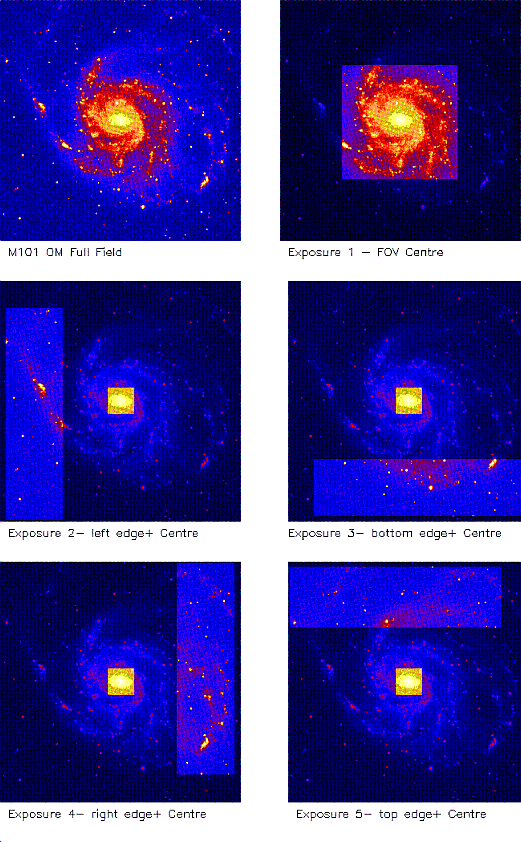Next: 3.5.9.4 Filter choice Up: 3.5.9 OM Operating modes and filters configuration Previous: 3.5.9.2 OM operating configurations
To achieve the best possible efficiency an integration time of at least 1 ks for each exposure is required. With the EPIC/RGS Image Mode configuration of 5 exposures per filter, this leads to 5 ks duration per composite exposure. Note that longer integration times are allowed (§ 3.5.9.1) with the maximum allowed exposure time per exposure of 2.2 ks for the Fast Mode (if two Fast Mode windows are used), 4.4 ks for the Fast Mode (if one Fast Mode window is used), and 5 ks for the Image Mode. Shorter exposure times are limited by the OM telemetry allocation. For the modes EPIC/RGS Image and Science User Defined the data are downloaded during the subsequent exposure. Therefore, either the windows must be small, or the subsequent exposure integration time must be long enough to allow the instrument memory to be emptied. This can be critical for crowded fields mainly with the optical filters. The absolute minimum exposure times are: 800 s for the Image Mode and 1200 s for the Fast Mode. It is strongly discouraged to define a large series of short Image Mode observations. A better way to obtain time information is to use the Fast Mode with longer exposure times and appropriate time binning.
There are in principle no constraints on the exposure time in Full Frame Low/High Resolution Modes. However, it is forbidden to exceed 5000 seconds, to avoid potential onboard memory corruption after interaction of cosmic rays with the camera, or counter wraparound. Table 27 summarises the integration time constraints.
| Science window configuration | Minimum (s) | Maximum (s) |
| Only Image Mode windows | 800 |
5000 |
| Image Mode + 1 Fast Mode windows | 1200 | 4400 |
| Image Mode + 2 Fast Mode windows | 1200 | 2200 |
| Full frame (low or high resolution) | 800 |
5000 |
 1000 sec strongly recommended
1000 sec strongly recommended
European Space Agency - XMM-Newton Science Operations Centre